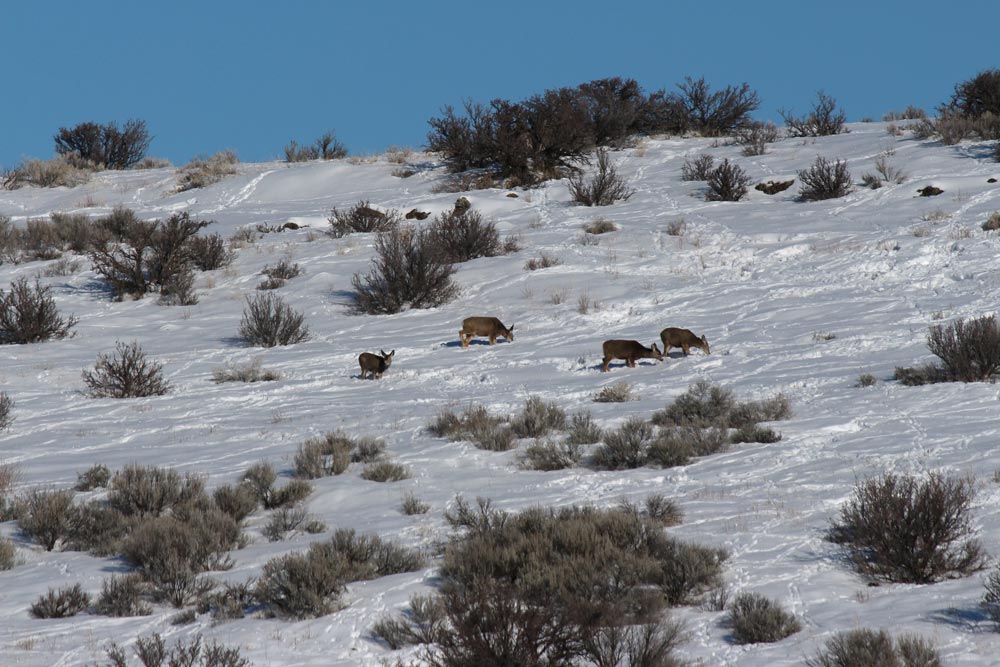Winter Feeding Policy Statement

Revision Date: April 2013
POLICY STATEMENT
The Idaho Fish and Game Commission recognize that big game populations should be maintained under natural conditions and by naturally available forage. Winter forage is the major limiting factor that determines the basic size of the big game populations and it must be maintained if these animals are to prosper and propagate. The Department will work with appropriate land management agencies in an effort to maintain winter ranges in a condition suitable to meet big game management objectives, including the restoration of ranges damaged from such long-term impacts as disease, weed infestation, and/or overgrazing. These restorations could include temporary solutions for short-term impacts caused by fire and/or drought. In order to maintain these winter ranges, big game numbers must be controlled through adequate harvest. We, therefore, do not sanction any wide-spread supplemental winter feeding programs.
- Big game animals, especially elk, when concentrated by supplemental feeding, are very susceptible to infectious disease, which can be transmitted to livestock and to other big game animals. Every effort should be made to lessen this threat.
- We are aware that big game harvests and weather vary from year to year throughout the state. In most years, snow depths, temperatures, and animal body condition do not create adverse conditions for wintering animals.However, there are times when unusual weather patterns may create critical periods of stress when winter forage becomes limited, unavailable, or animals are forced into areas involving public safety. We recognize that we cannot manage game populations for these extreme weather conditions—nor should we.
- The Department is authorized to feed big game only if the following conditions exist:
- To prevent damage to private property or for public safety when other methods of preventing damage and providing safety measures are determined to be impractical, inappropriate, or ineffective and the amount of damage or cost of protection is expected to exceed the cost of feeding.
- To prevent excessive mortality of big game populations in drainages that would affect the recovery of the herd.Some mortality should be expected, especially from the young and old segments of the population.
- To prevent damage to private property or for public safety when other methods of preventing damage and providing safety measures are determined to be impractical, inappropriate, or ineffective and the amount of damage or cost of protection is expected to exceed the cost of feeding.
- It is the responsibility of all field personnel to advise the Regional Supervisor of weather, animal conditions and numbers, and public input on situations that meet the feeding criteria outlined above. If the Regional Supervisor, in consultation with the regional winter feeding advisory committee, determines that the criteria has been met and that an emergency exists, he/she will inform the Wildlife Bureau of his/her decision and the Wildlife Bureau will notify the Directors Office, Enforcement Bureau and the Communications Bureau. The regional big game operational plan will then be implemented.
